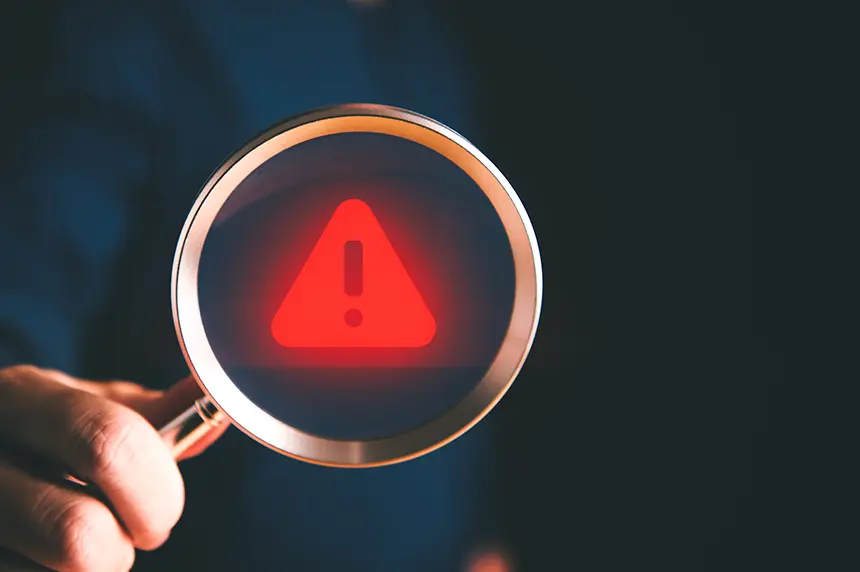Explore insights for threat detection and response, covering key tools, best practices, and strategies for building a resilient security posture.
The global landscape of cyberattacks is rapidly evolving, driven by the vast digital transformation across various industries and sectors. Forbes reports a staggering 2,365 successful cyberattacks in 2023, marking a significant increase from previous years. Data breaches have also surged, increasing 72% from 2021. The projected cost of cybercrime is expected to reach more than 20 trillion U.S. dollars by 2026. These escalating numbers show the urgent need for robust threat detection and response capabilities for all organizations, regardless of size or industry.
On the other side, spending on IT security defense solutions continues to grow to counter the ever-increasing number and sophistication of cyberattacks. However, despite all the security solutions organizations install, threat actors still find numerous ways to sneak in and penetrate even the most protected networks. This ongoing war against cyber threats shows the need for a more proactive and adaptive approach to cybersecurity.
A robust threat detection and response capability is vital for boosting organization security defenses and fighting cyberattacks that surpass traditional security solutions.
Defining Threat Detection and Response (TDR)
TDR is the tools, processes and procedures for protecting digital assets from cyber threats. It proposes a cybersecurity strategy that takes a comprehensive approach to stopping different types of attacks. In addition, it performs continuous monitoring and analysis of potential threats (both known and unknown) and proposes immediate actions to mitigate those risks.
In today's information age, organizations' dependence on digital technologies has increased unprecedentedly and so have cyber threats. To protect organizations' digital assets (including data and IT infrastructure), organizations increasingly utilize Security Operation Centers (SOCs) to detect and respond to cyber threats before they reach their IT environment.
What is a SOC?
A SOC is a team of security experts who utilize different security tools and techniques to detect and counter cyberattacks. The SOC's role is not just preventive; it also executes threat intelligence operations to measure the possibility of cyberattacks against critical assets and proposes mitigation strategies to stop them before they occur. This proactive role allows organizations to stay one step ahead of emerging threats.
SOC teams use threat intelligence extensively to detect and predict cyberattacks. These may include intrusion detection systems (IDS), security information and event management (SIEM) tools and advanced analytics software powered by artificial intelligence (AI) and machine learning (ML) technologies.
The SOC also plays a vital role in incident response. For instance, it is responsible for coordinating efforts across the organization's departments to minimize damage and restore normal work operations as quickly as possible in the event of a successful attack.
Threat detection and response is composed of two names. Let us define each one:
Threat detection (TD)
Threat detection is the process of continuously monitoring and analyzing an organization's IT environment to identify and respond to cyberthreats. A typical IT environment of an organization includes computer networks, endpoints devices (e.g., workstations, printers, scanners, laptops, tablets, smartphones), application programs and data. All of these components must be scanned for signs of malicious activity. The end goal is to detect known and unknown threats in addition to evasive malware before they can cause any harm to the target IT environment.
Different security tools are used for threat detection. Here are the most common ones:
- Intrusion Detection Systems (IDS): IDS is a network security solution used to monitor network traffic in real-time to detect malicious and suspicious activities or any violation of enforced security policies. IDS systems have two types: network-based and host-based, and their detection method can be either signature-based, anomaly-based or a combination of both. IDS systems are often used in combination with intrusion prevention systems (IPSs), which can automatically block malicious traffic.
- User and Entity Behavior Analytics (UEBA): The UEBA solution works by establishing a baseline of regular user activity. It collects and analyzes various user behavior data, such as user logins (location, device type and time), file access, network traffic patterns and application usage. This data creates a baseline of normal user behavior during work. If a specific user's behavior changes, for example, by accessing sensitive files that are not required for their work or logging in from an unusual location, the system flags this behavior as abnormal and issues an alert.
- Endpoint Detection and Response (EDR): EDR is a security solution installed on endpoint devices, such as laptops, workstations and internet of things (IoT) devices. EDR provides automated monitoring in real-time against different types of cyber threats such as ransomware and other types of malware.
- SIEM (Security Information and Event Management): SIEM is a security solution that collects and analyzes data from various network devices and security solutions. SIEM systems correlate collected data and use them to detect and investigate security threats. The primary sources a SIEM system collects data from them include:
- Network devices (routers, switches, Wi-Fi access points)
- Security solutions (firewalls, antivirus programs, intrusion detection systems)
- Servers
- Applications – such as MS Office 360
- System logs
- Cyber threat intelligence feeds (CTI): CTI provides real-time data on emerging threats, such as new malware strains, malicious IPs and domain names. Integrating the information collected from threat intelligence feeds with detection tools allows organizations to block known threats proactively. For example, if a particular domain name is known to be associated with a current ransomware campaign, then security teams can block traffic to that domain before any incidents occur.
Here are some popular cyber threat intelligence feed sources:
Threat response
Threat response is the actions taken to contain, remove and recover from security incidents. Threat response, also referred to as incident response, comes after an incident has been fully resolved.
The goal of threat response is to prevent threats from exploiting security vulnerabilities before they cause damage to the organization's IT systems, data or reputation. Threat response tasks are proactive (continuous monitoring and automated alerts) and reactive (works to counter threats after they've been identified as true positive or actual threats).
In general, threat response entitles the following activities:
Automated response to security incidents
Upon detecting a threat, the automated systems will act promptly to stop or isolate the affected component. These automated solutions leverage advanced technologies (AI and ML) and predefined procedures settled by network administrators to detect and streamline the process of handling security incidents.
Examples of automated responses include:
- Network segmentation – Segment the portion of the network compromised with malware to prevent threats from spreading to other network locations
- User account lockout – For example, disabling a user account after failing to sign in three times to prevent brute-force attacks
- Endpoint device isolation - Disconnect and isolate the infected endpoint device with malware from the network to prevent malware from propagating to other endpoint devices and systems
- Firewall rules update - Update firewall rules automatically after receiving an updated list of malicious IPs used in previous cyberattacks
Threat hunting
Threat hunting is the act of proactively searching for malicious activities within an organization's IT environment, even without receiving an alert about their existence. This proactive security approach proves very useful for detecting advanced cyberattacks, especially Advanced Persistent Threats (APTs) and sophisticated malware that can evade traditional security measures.
In advanced cyberattacks, threat actors may remain silent within the target IT environment for an extended period. When there is a chance, they will begin harvesting users' credentials, compromising more endpoint devices to install malware or stealing sensitive data such as trade secrets and intellectual property (IP). This is where the role of threat hunters becomes crucial to detect hidden malicious activities by examining system logs, network traffic patterns and system behaviors for signs of stealthy attacks or data exfiltration that automated systems have missed.
Patch management
After identifying vulnerable systems, applying patches as quickly as possible is critical to prevent cyber attackers from exploiting them. Patch management is the practice of deploying updates and security fixes to firmware, software drivers, operating systems and installed applications. Patching is not limited to endpoint devices; for instance, networking devices and even security solutions such as firewalls and IDS/IPS sometimes need patches to fix software bugs.
Incident containment
After identifying the threat and confirming its presence in the IT environment, the security response team works instantly to isolate infected systems, preventing the threat from spreading to other areas. For instance, they might disconnect an endpoint device infected with ransomware from the rest of the network. In cases of major incidents, such as ransomware affecting multiple systems, the response team may opt to disconnect the entire network from the internet. This action prevents communication with the attacker's command and control server to receive encryption instructions or to exfiltrate sensitive data outside the organization network.
Forensic analysis
After mitigating the threat and preventing it from spreading across the infected IT environment, the digital forensics analysis team's role begins. They gather information from different places, such as operating system and application logs of hardware devices, inspect users behaviors before the incidents and check system and program configurations to understand how attackers gain access and who is behind the attack to prevent it from recurring. The forensic team's findings often play a vital role in improving overall security posture and may be used in legal proceedings if necessary.
Phases of threat detection and response
A typical TDR process contains the following phases:
Detection
SOC analysts and threat hunters detect malicious activities using specialized tools or via manual methods. This involves continuous monitoring of network traffic, system logs and user behaviors to identify suspicious activity.
Inspection
After identifying a potential risk, the SOC team will inspect it thoroughly to confirm its authenticity (true positive) and assess whether it has affected any assets. This phase involves a detailed analysis of the detected activity to understand its nature and potential impact.
Containment
Using various techniques, such as network segmentation, disconnecting infected endpoint devices from the network or terminating suspicious IP connections, the SOC team performs activities to stop the spread of the attack—whether malware or a lateral movement of an APT actor. The goal is to isolate the threat and prevent further damage.
Eradication
The security team works to remove the malicious actor from the IT environment entirely. The security vulnerabilities that the threat actor exploited to gain an entry point are also closed or fixed to prevent further attacks. This may involve removing malware, deleting compromised user accounts or patching vulnerable systems and applications.
Recovery
After removing offenders and closing any open security vulnerabilities, the security team works to restore normal operations. This includes recovering isolated network segments, restoring systems from clean backups and ensuring all affected services function correctly.
Reporting
The security team prepares a comprehensive report detailing what happened and how they managed to contain the incident and restore operations. These reports are commonly delivered to top management and other interested stakeholders. They typically include a timeline of events, actions taken, lessons learned and suggestions for improving and enforcing security defenses.
Risk mitigation
To prevent similar incidents from happening again in the future, the security team needs to reassess their security defenses, update security policies if the attack was caused by an unaware employee and identify any necessary changes in tools, processes or procedures to improve the security of their IT environment.
Threat detection and response have become critical components of modern cybersecurity strategies. Organizations can effectively detect, contain and mitigate cyber threats by combining advanced AI and ML technologies, skilled IT personnel and well-defined workflows. As the threat landscape evolves, implementing a robust TDR framework is essential for protecting sensitive data, maintaining operational continuity and staying ahead of sophisticated attackers.
Remember to stay secure and anonymous while you research. Protect your identity and the intent of your investigation with a purpose-built digital investigations platform like Silo for Research.
Tags Cybersecurity SOC Threat intelligence

